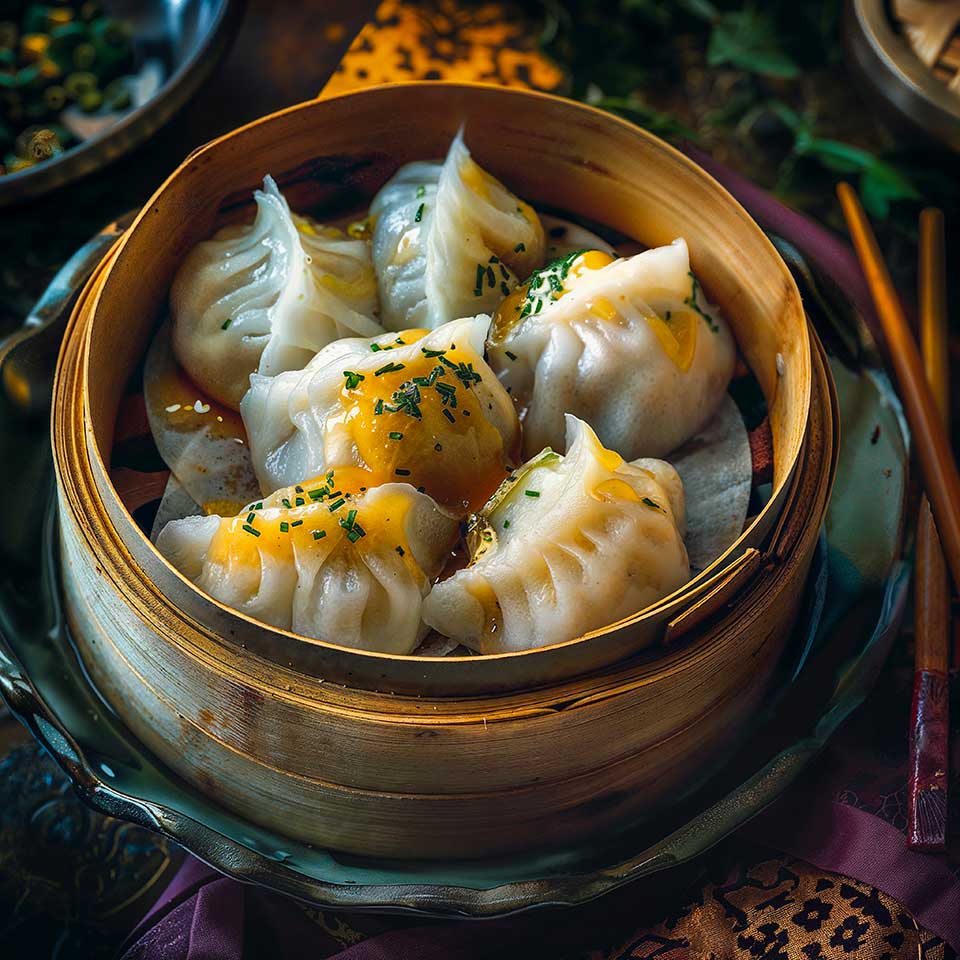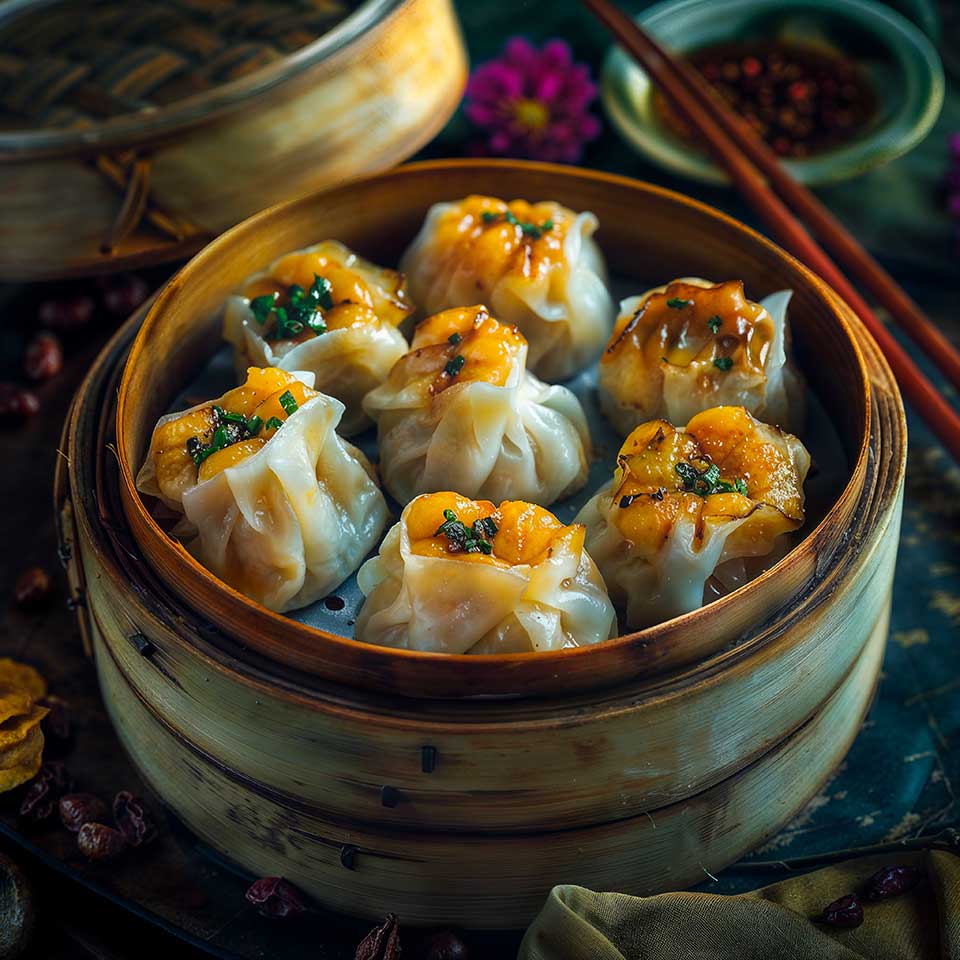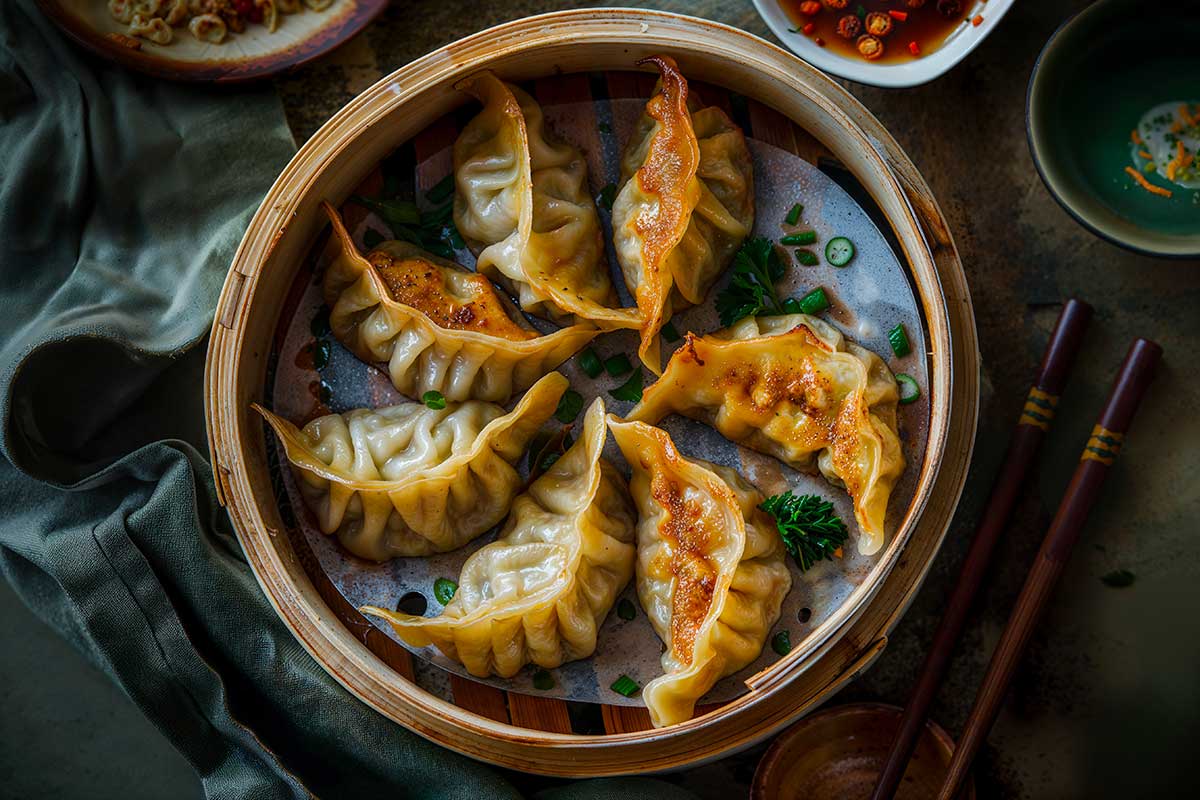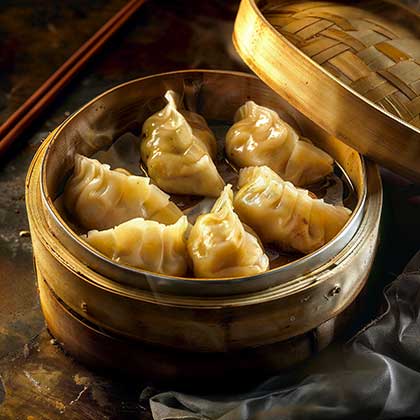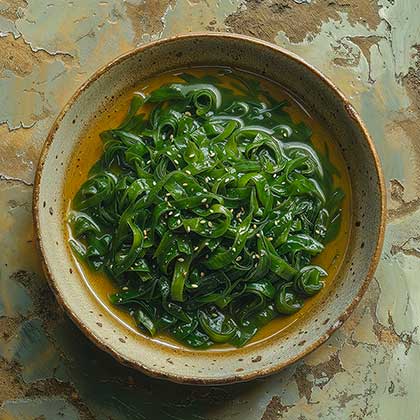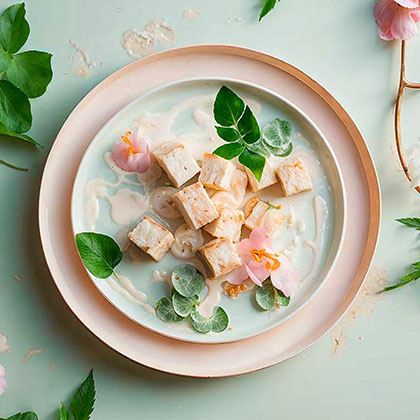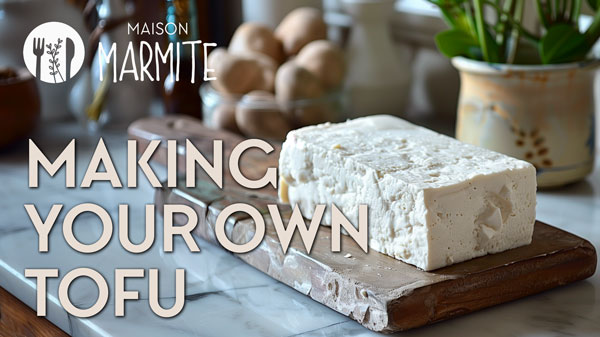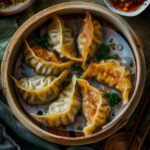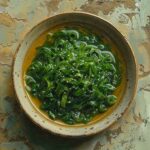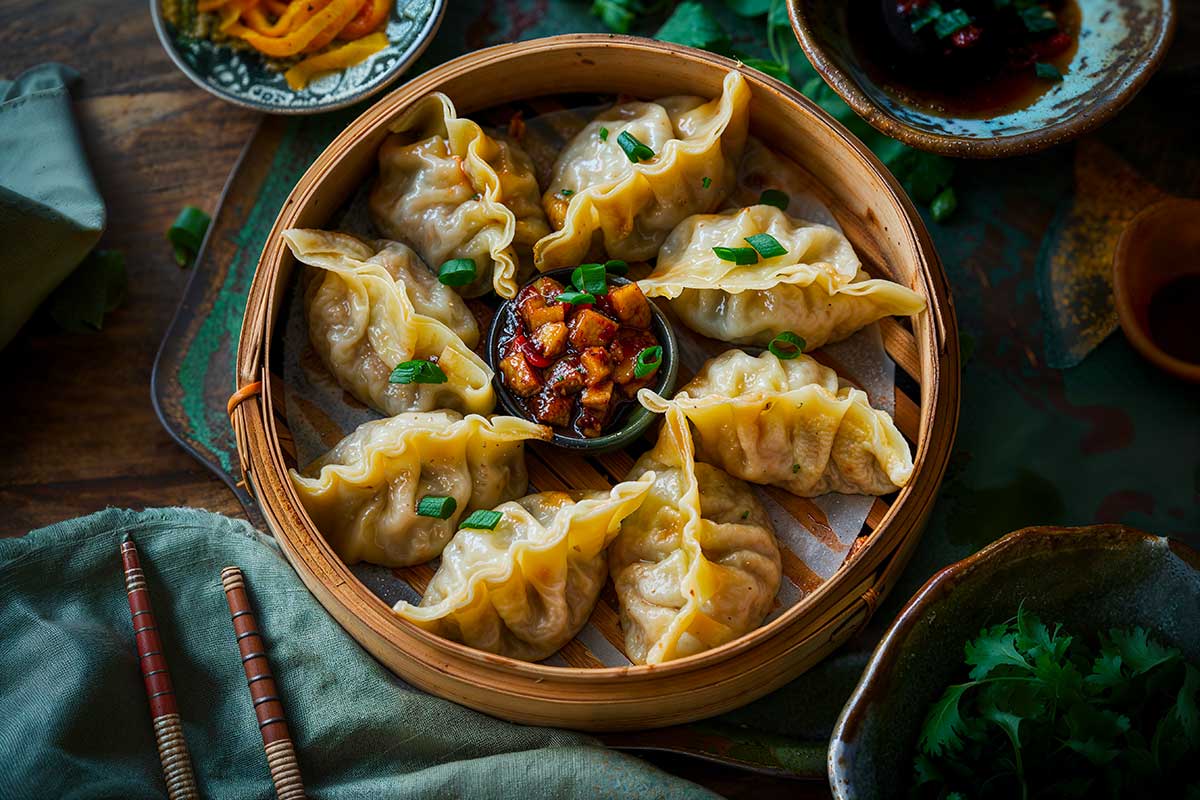
Dim sum, those small culinary wonders from Chinese cuisine, captivate taste buds around the world with their variety and delicacy. Accessible and fun to prepare, they offer an excellent opportunity to dive into the art of Asian cuisine. Easy to customize and always delicious, dim sum might seem intimidating to make, but they are surprisingly simple with a little practice and the right tips.
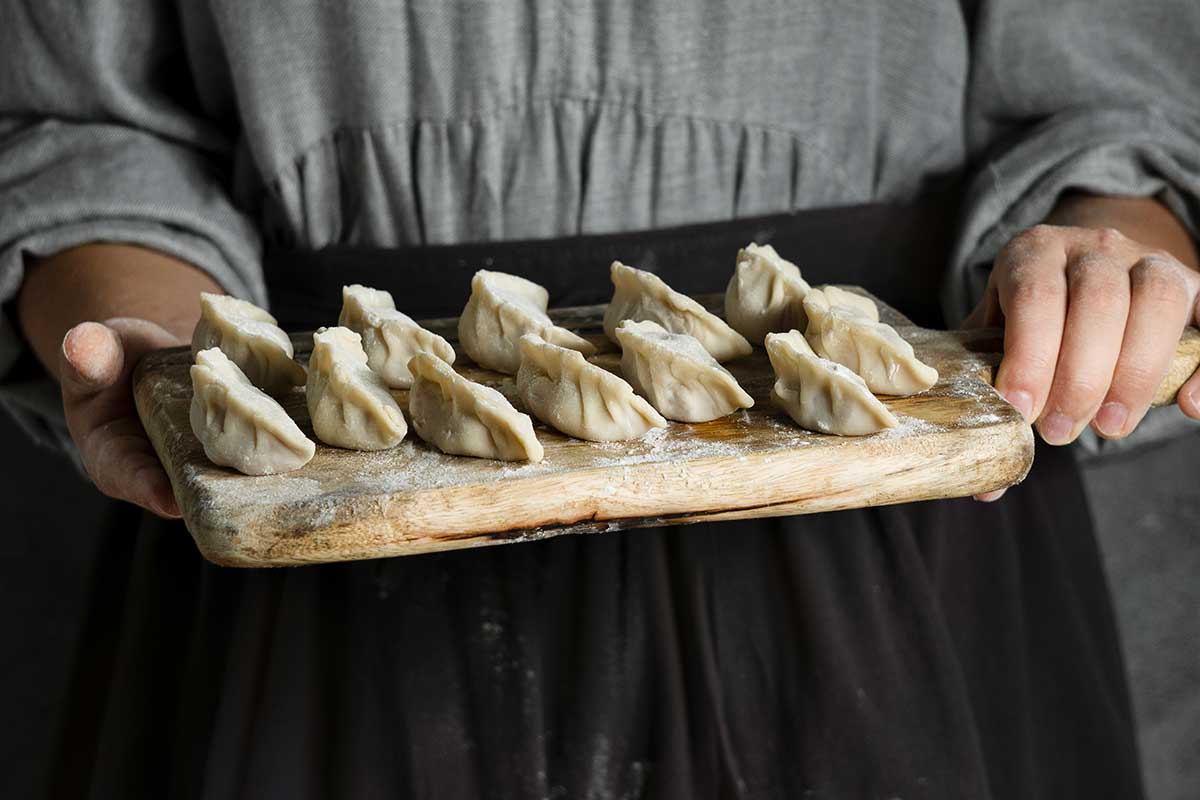
Origin of Dim Sum Dim sum originated in southern China and are associated with Cantonese tea houses where they were served to weary travelers along the famous Silk Road. Their popularity grew as merchants stopped to rest and drink tea, accompanied by these tasty small bites, marking the origin of the ‘Yum Cha‘ (tea drinking) tradition.

The Dough The dough for dim sum is traditionally made from a simple mix of all-purpose wheat flour, water, and sometimes salt. It can be kneaded by hand to achieve a soft and elastic texture, or in a food processor to save time and ensure a uniform consistency.
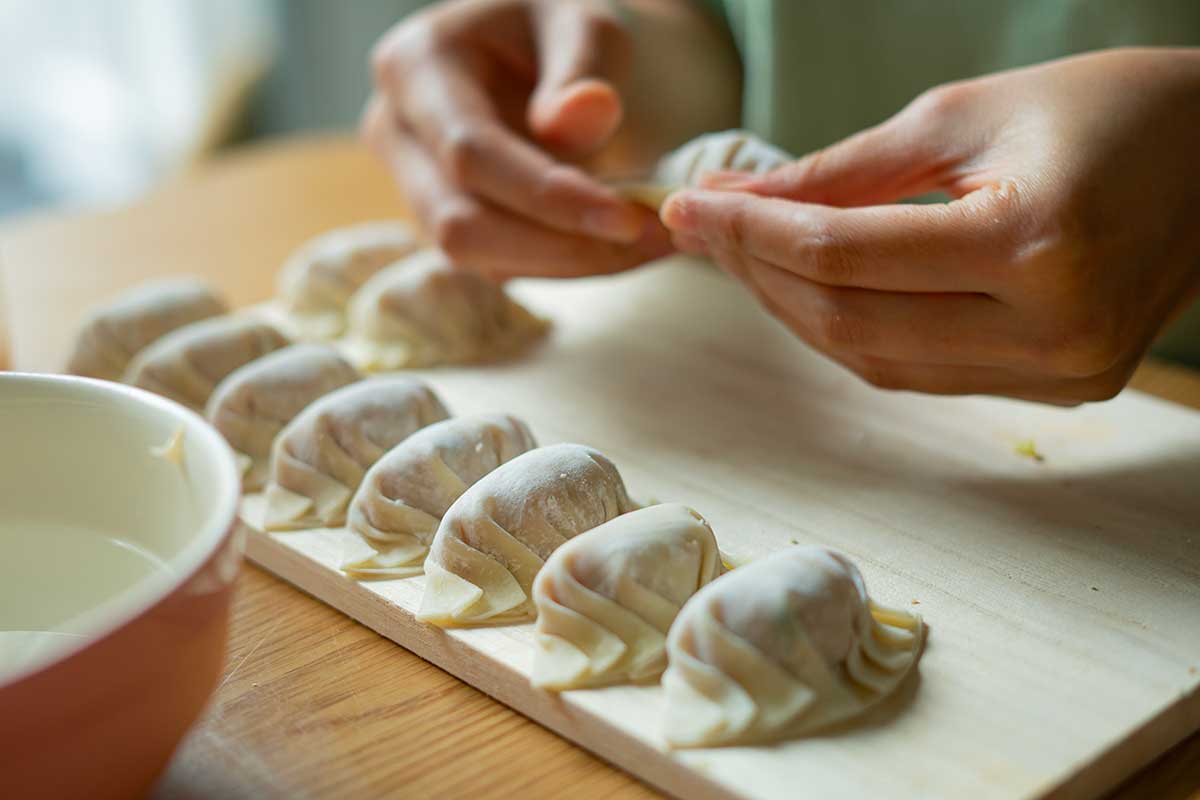
Shapes and Forming Dim sum can take various shapes, generally round or half-moon. To shape dim sum, start by rolling out the dough thinly and cutting circles using a glass or cookie cutter. Before placing the filling in the center of each circle, it is important to lightly moisten the edges of the dough with a little water; this helps to seal the dumplings when they are folded, ensuring they do not open during cooking. You can then proceed to fold them into a half-moon or more complex shapes as per your preference. For those who prefer more specialized tools, there are dim sum molds that facilitate shaping.
The Filling Dim sum fillings offer a rich palette of flavors, ranging from finely chopped vegetables to combinations of mushrooms and tofu, and mixtures of nuts and aromatic herbs. For optimal results, consider pre-cooking the filling: this not only allows better control of seasoning but also achieves a more unctuous and less dry texture. Although it requires a bit more work, pre-cooking the ingredients of the filling before wrapping them in the dough can transform the taste and texture of your dim sum. However, this pre-cooking step can be skipped for most dim sum.
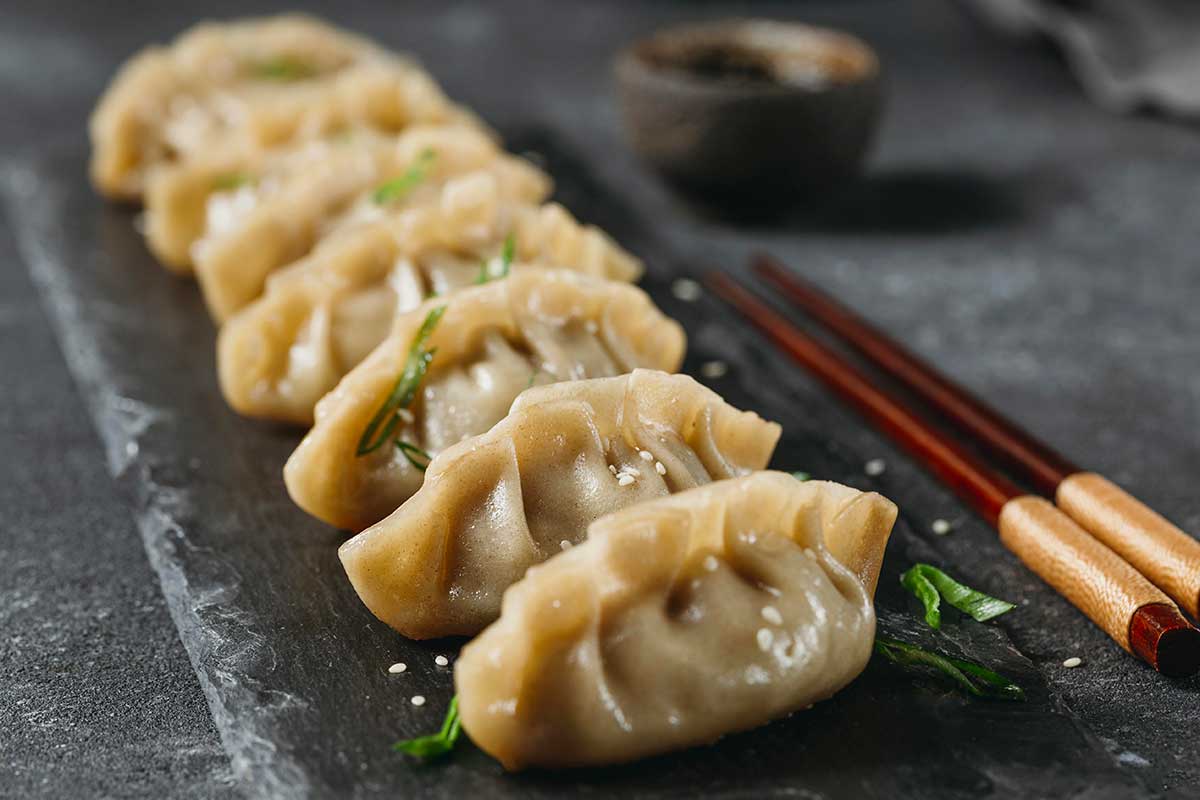
Steam Cooking Method Traditionally, dim sum are steamed in stacked bamboo baskets, which allows flavors to diffuse evenly while preserving the delicate textures and subtle aromas of the ingredients. Most dim sum require about 10 to 15 minutes of steaming over simmering water. It is crucial to keep the water at a simmering temperature, not boiling, when steaming dim sum, as water that is too hot can make the dough too soft and affect the delicate texture of the dumplings. And it is important to ensure that the water does not touch the dumplings during cooking to prevent them from becoming soggy. Using a parchment paper liner in the bottom of the baskets can also help prevent the dim sum from sticking, making cleaning easier.

Pan-Frying Method For those who prefer a crispy texture, dim sum can be fried in a pan. This method brings a richness in taste and a golden, crispy texture, perfect for those who appreciate a contrast in textures. To fry dim sum, heat a moderate amount of oil in a pan over medium heat and cook the dumplings for a few minutes on each side. Make sure they are evenly browned and crispy before removing them from the heat. An important note: this method is generally not used for all types of dim sum; it is ideal for those designed to be crispy, such as gyozas.
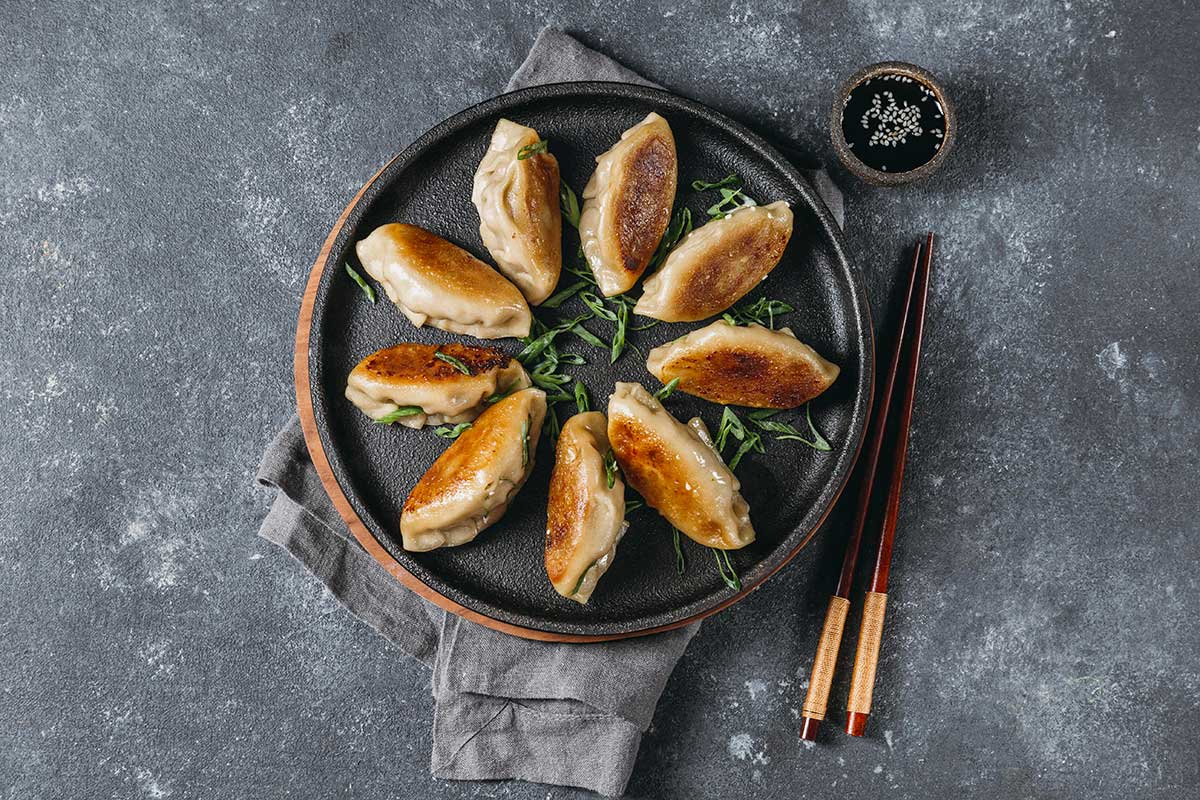
Combined Cooking Method A very popular hybrid method for cooking dim sum is to lightly fry them before steaming. Start by heating a small amount of oil in a pan over medium heat and place the dim sum in the pan. Let them cook until the bottom of the dumplings becomes golden and crispy. At this point, carefully add a small amount of water to the pan (enough to cover the bottom, but not submerge the dumplings) and immediately cover with a lid. Let the dumplings steam until all the water has evaporated and the rest of the dough becomes tender, which generally takes about 5 to 7 minutes. This method allows you to enjoy the perfect combination of a crispy texture and a juicy softness, providing a unique taste experience.
The Sauce A sauce is essential to accompany your dim sum. Popular options include soy-ginger sauces, sweet and sour sauces, or even spicy creations for those who love a thrill. These sauces can be easily prepared at home with fresh ingredients to complement the taste of your dim sum.
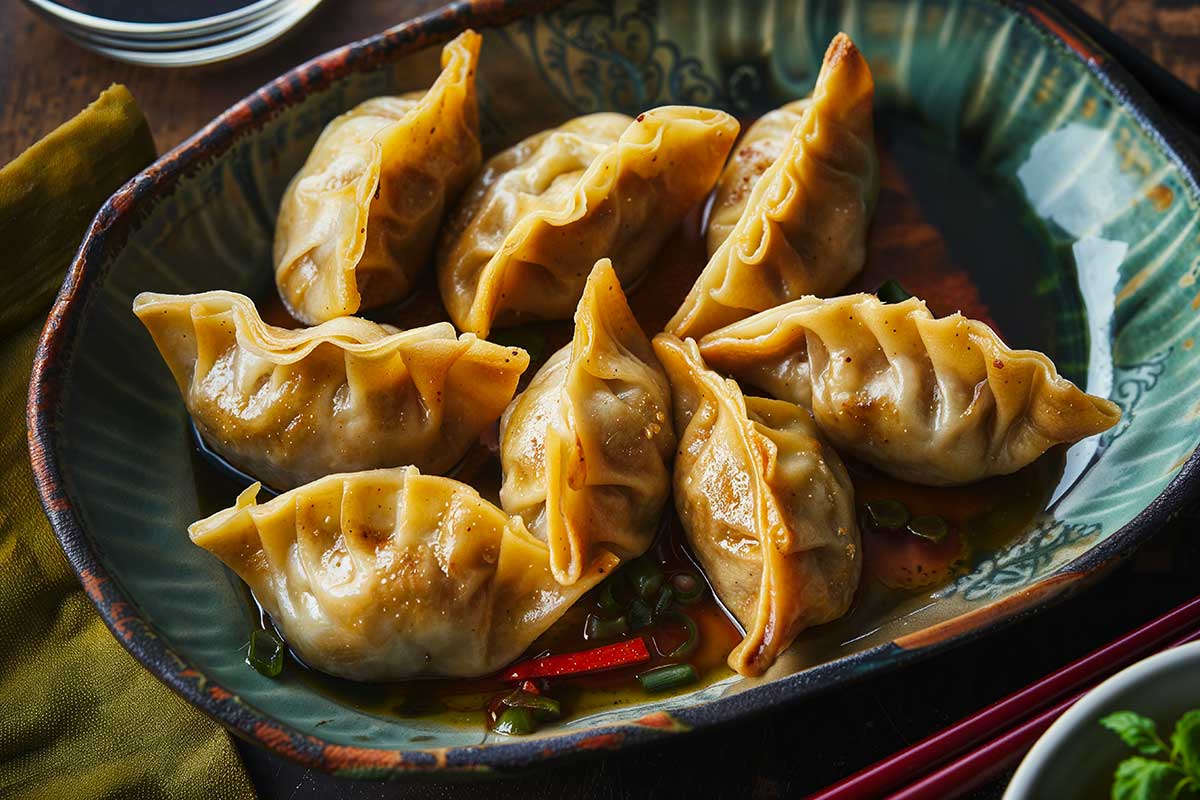
Conservation Dim sum can be prepared in advance and stored in the refrigerator for quick cooking on demand. They also freeze very well, either raw or already cooked, and can be steamed directly without prior thawing for optimal tasting.
Our Recipes
Dim sum, those delicate and flavorful small bites typical of Chinese cuisine, continue to captivate gourmets around the world. For those interested in learning more...
Steamed dumplings with spinach and shiitake mushrooms, also known as dim sum, are a true celebration of the delicate flavors and textures of Chinese cuisine....
Wakame is a marine algae and a key ingredient in many Asian recipes, especially Japanese. Recognizable by its dark green color and tender texture once...
Tofu, often overlooked and underrated, can surprise with its subtle taste. But do not be mistaken, its neutrality is its strength. Capable of blending into...
Donuts are more than just a sweet treat; they're a true culinary science in their own right. So, how do you achieve that perfect blend...



